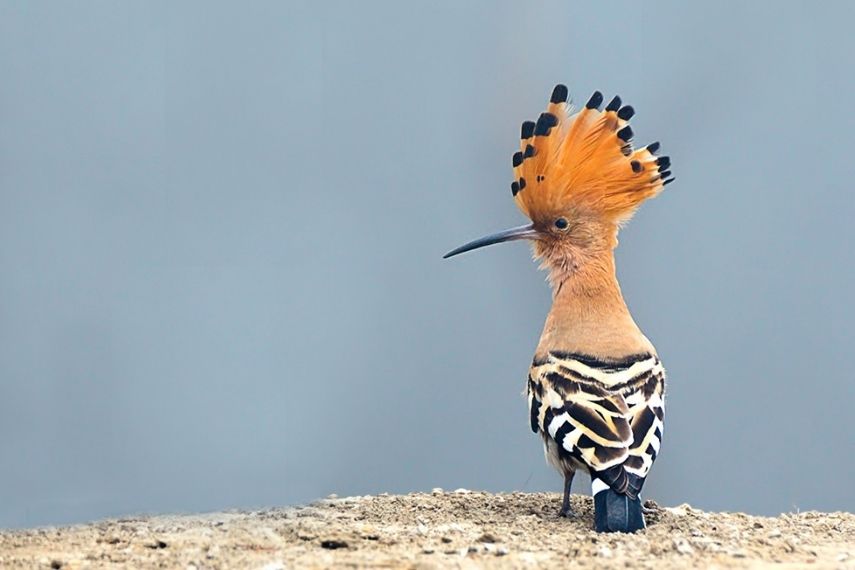DAY 01
Arrival at the Indira Gandhi International Airport, New Delhi
Post clearing the immigration formalities and collecting your baggage, please proceed to Exit Gate 4 or 5*. The Asian Adventures’ representative waits for you here with a placard of your name, to drive you to the hotel reserved for you.
While you drive to the hotel, you may watch out for your first bird of the trip.
We understand that it may have been a long, tedious journey. So, spend a few hours relaxing at the hotel. Post that Asian Adventures’ representative will again meet you and brief you about the Birding Tour that starts with daybreak the next day. The representative will also hand over documents and items if any related to the tour. Feel free to discuss the itinerary in detail and seek any clarification you need.
Should you wish to visit any place in Delhi (if time permits), do let the representative know – we will arrange the vehicle with a driver for you.
If you need a wake-up call, let the hotel staff know; do inform our representative as well
TIPS
- The contact number of our representatives will be emailed to you
- The arrival/exit gate may change, thus please kindly confirm the same with us as soon as you land
- Please exchange currency at the Airport itself, since it may cost you extra if done elsewhere
- Indian Phone SIM card can be arranged
- The hotels will have clean en-suite facilities and in the house dining rooms where Indian
Meals will be served.
- Inform us about your:
- – Dietary restrictions or preferences
- – Any health issues
- – Any items you need, beyond an Indian Phone Sim Card
- – Any other preferences related to Hotel Room | Dining Options | Side Excursions
- Although we have fixed dates for the tours and many versions of it are at offer,yet the tour can be tweaked and altered for serious bird watchers, photographers, differently-abled tourists, senior citizens, families, non-birding spouses, cultural add-ons
- This tour is also offered as a Bespoke Tour with the changes that one needs
DAY 2
AN EXCURSION TO SULTANPUR BIRD SANCTUARY
At the designated time, our driver will wait for you to drive you to the Sanctuary, where your local guide will meet you. The guide is experienced and will know the stake-outs. The park is best explored on foot. Asian Adventures Team ensures that the guide is armed with an experience of spotting the birds, even at the most-unimaginable spots. Besides the guide, you will also have a handbook of birds through the 21 days. It will help you each bird spotted and know about it in detail.
The Sultanpur Sanctuary habitat constitutes a wetland Ecosystem that is rich in birdlife. One can get over 70+ species in a day.
The marshes, bogs and the grasslands house many key species
Ask us for the latest checklist of Birds and Mammals of Sultanpur Bird Sanctuary
This is a half-day excursion finishing by noon. You may have the guide sit down with you to do the checklist. Thereafter the driver will drive you back at your hotel where you can relax for the day before we head start to the next place the following day. The hotel will be ready with a sumptuous Indian Meal done as per your requirements conveyed to us in advance. We start the day early the next day as we drive down to the land of the Indian Tiger – Ranthambore, Rajasthan.
NON-BIRDERS: For those who wish to opt for birding in the city or a guided city tour, we will have another set of arrangements with the driver and a car. There are umpteen places which you will find on Google, but we suggest that you must visit the breathtaking Heritage Park, which has come into being in 2017. Locals know it as the renovated Sundar Nursery (which was a wasteland till 2015). It is located very close to the Humayun’s Tomb and opens till 5 pm in the evening.
CAUTION: In case you are carrying snacks, or biscuits of your own to the bird sanctuary, please do not feed the birds. Remember, human food is different from those of animals and we at ASIAN ADVENTURES encourage Nature Conservation of the highest standards.
TIPS
- Packed breakfast and bottled water will be pre-arranged (good to get your own bottles to avoid plastic)
- Drivers’ numbers will be provided to you for better coordination
- It is the driver’s responsibility to coordinate with the guide to meet up before and after the excursion
- If anyone in your group does not wish to visit the sanctuary, other sightseeing or city tour can be arranged on prior notice.
- Delhi has biting cold in winter, so adequate woolens are recommended
- Walking shoes will be ideal
DAY 3
DELHI TO RANTHAMBORE
Today we travel by the morning train to Ranthambore Tiger Reserve, one of the finest Tiger Reserves of India and a bird park too.
Post breakfast, Asian Adventures’ representative escorts you to the train station. Your tickets will be in a docket provided to you. The representative will help you locate the train car and will make you board the train. Your arrival at Sawai Madhopur station will be around noon when the representative will meet you and take you to the hotel reserved for you.
Traveling by Indian Railways is a very different experience than that done in other parts of the world. For instance, even the halting stations will offer you a glimpse of many birds. The bank mynas, crows, and pigeons can be seen at the railway platforms themselves…picking up food items that may have fallen off passengers’ bags or local food stalls. And as the train takes small halts at rural stations, you can enjoy varied landscapes and get glimpses of birds as you trudge along.
As you approach the Sawai Madhopur Station do keep a lookout for Blackbuck and Indian Gazelle (Chinkara).
The 30-minute drive from Sawai Madhopur station to the lodge near Ranthambore station is an experience in itself. The arid yet magnetic landscapes interspersed with human habitation, especially the ones residing in those mud-huts; local folks in colorful attires dotting the arid landscape, sights of Camels…all these and more makes it this journey worthwhile for avid/keen photographers.
When you check in at the resort reserved for you, Rajasthan the land known for its warmth and hospitality will greet you not just in words but in the ambiance as well. Right at the doorstep of the Hotel you will find the surroundings plush and bathed in the music, folklore, and arts of this royal state.
Have a sumptuous Rajasthani Meal done to your taste and palate. Relax for a while, till your local guide joins in. He will details to you all about the program for the next few days that you spend here.
For the days you are here, every early morning you will be taken for Tiger Tracking, wildlife viewing, and bird watching, while noon will be reserved for visiting the Ranthambore Park. And this will be done via safaris atop open trucks called ‘Canter’ so that you get a 360-degree view of the region.
Dry deciduous jungles have taken over the ruins of the Ranthambore Fort. And that’s where Tigers and Leopards reside these days. It is amazing to see how man-made structures can return to the wild where wildlife subsists in its richness. Ranthambhore is truly a photographer's delight.
One can expect 50+ new species. The main ones to look out for are:
Ask us for the latest Bird and mammals checklist of Ranthambhore
Post dinner, if the stake-outs remain, your guide will rush to you and take you to spot a Striped Hyena and a few Owls.
Your guide informs you about the time for the morning Safari for each of the next two days. He will also inform the resort of early morning breakfast. So, before you retire for the night, you may want to soak your five senses in the local art and culture on display at the resort. Take good rest, since there is a lot of adventure on the cards the next day.
EARLY ALERT: Just in case a train journey is not possible, you will travel by road which may take about 8 hours. And that in itself is an experience of a lifetime since en-route you can….
- capture local/migratory birds through the route at places very carefully selected for you by your tour guide who has an eagle eye for such bird-sightings
- exchange pleasantries and cultural insight of the local people at various stops, including the very beautiful Lalsot village
- enjoy local delicacies at hygienic food points we choose for you
- soak your eyes in the color that the locals’ attires lend to the otherwise arid region (and maybe buy a few of these to carry back home)
- have a taste of the village life in terms of taking a quick trip to their mud-thatched roofs, by the roadside
TIPS
- Bespoke Tours can add or substitute other Tiger Parks of Central India
- If the train is scheduled for an earlier hour, a packed breakfast will be provided
- Porters can be hired at the station at a cost of INR 100 per bag
- Do remember to carry your warm jacket for every safari as it can get chilly in winter
- Should you wish to focus only on birds, there are stake-outs for species outside the park as well
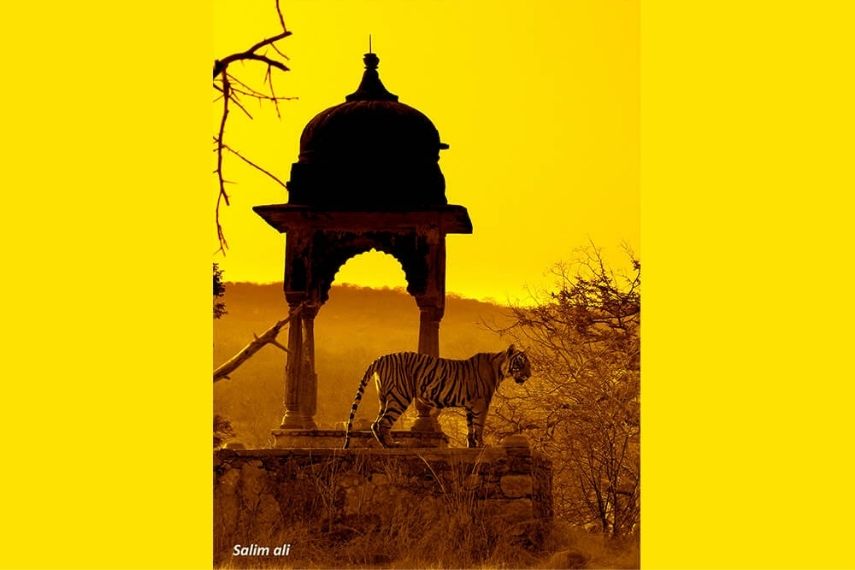
DAY 04, 05
RANTHAMBHORE TIGER RESERVE
In winters, Tigers as well as other mammals are most active early in the morning and late evenings. Thus, your guide meets you at the hotel reception at a pre-conveyed time early morning for an adventurous early morning Safari.
On both days, the guide will come with entry tickets, a packed breakfast of finger-Licious Rajasthani Food as well as water, the Bird Handbook, and above all the Rajasthani hospitality that is embedded into each atom of the region!
Though the surroundings of the lodge will give you a few species of birds as well, we suggest you must enter the park early morning for tracking down the beauty of the region- the Royal Bengal Tiger.
Your guide will take you on an extensive tour of the Park to capture Tigers, mammals as well as amazing varieties of birds with your camera. As the sun goes up, even in winter Ranthambhore landscape begins to get very warm, with the denizens of the jungle moving to shade and restricting their movement. That’s the time you will retire to your lodge – around mid-morning hours.
So before you set out for an evening safari, you have ample time to freshen up, update the bird/ wildlife checklist and sort out photos. And also….enjoy Rajasthani cuisine over lunch! The flavor of Indian food changes as you travel from one region to another. And Rajasthani Cuisine is among the topmost in the world.
On both the days respectively, once you have seen enough of Tigers and other mammals, and birds through the morning and evening, then you can also spend the afternoon of the two days.
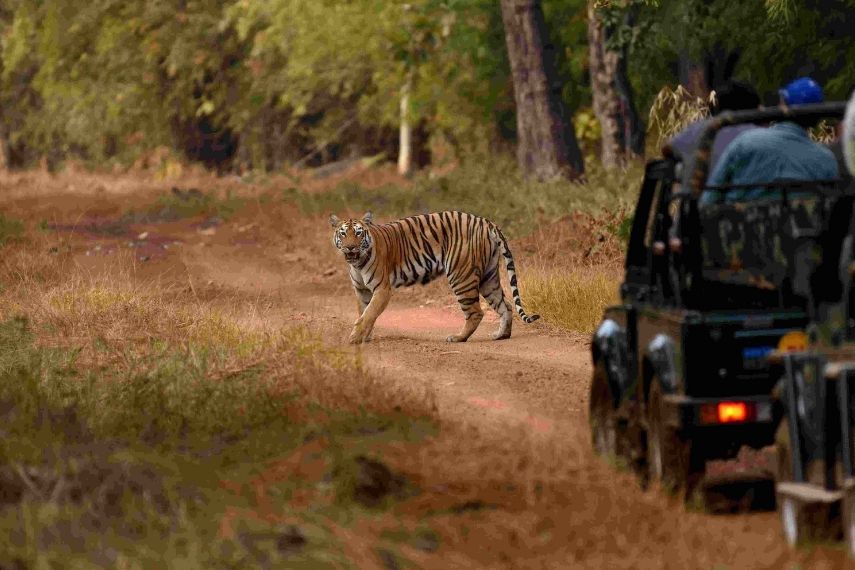
FOR INSTANCE ON THE FIRST DAY AT RANTHAMBORE YOU CAN…
Visit the Soorwal Lake for Birds.
Take a tour of the Ranthambore Fort
A short hike to Ganesha temple is a great opportunity for photography and a cultural insight
AND ON DAY 2 AT RANTHAMBORE YOU CAN….
Visit ‘Dastkar’
The social enterprise is run by women and is famous across the country for unique handicrafts, artifacts as well as attires. Dastkar thrives to make women self-dependent while their husbands are employed with the Ranthambore National Park in one way or the other.
Visit Ranthambhore School of Art
It is a great idea to meet artists here who are masters of creating life-like paintings of Tigers as well as other Wildlife
Take a CAMEL RIDE to the Nearby Village
Why not hop on to the ship-of-the-desert and soak in a feel of the local region? Though Ranthambore is an international tourism hub, the village has still retained its original charm with mud-thatched roofs, traditional Rajasthan lifestyle, old livestock, and farming practices. An experience that you might not get elsewhere.
At the end of each of these days, your guide will inform you about the next day’s itinerary. Enjoy a pure Rajasthani dinner and retire for the night.
TIPS
- Walking shoes will be ideal
- Avoid ‘fresh milk’ products, raw salads, and vegetables, pork or mutton, and food that isn’t piping hot
- To opt for activities other than the safaris, Asian Adventures would need sufficient notice. To substitute these activities for a safari may entail extra cost
- It is your personal choice to tip the guides, drivers & hotel staff collectively or individually.
DAY 06
RANTHAMBHORE TO BHARATPUR
This is the day when you will head to Bharatpur for an excursion to the Keoladeo Bird Sanctuary. But before this, your guide takes you through a last tour of the Ranthambore National Park.
You return to the resort mid-morning. Take a short, relaxing break and check out by noon.
Your driver will be ready with your vehicle fueled up. And the vehicle will have packed lunch and water on a pre-order basis. Ranthambore to Bharatpur is a 5-hour journey. Bharatpur is home to not just the bird sanctuary, but many hidden gems as well. Asian Adventures will help you explore these like no other tour operator.
The road journey is very enthralling. Your driver will take ‘toilet stops’ at appropriate places. You will enjoy the rural culture of Rajasthan, through the eye-view of villages that you cross on way. This time of the year, mud houses amid plush mustard fields, add beauty to this otherwise arid landscape. And amid these, you can spot the colorfully attired Rajasthani people. A feast for the eyes.
You check in by an evening at the hotel reserved for you. Your guide meets you here to apprise you of the plan for the next few days, till you are here. And if time permits he will take you to watch out for Owls near the hotel, before you hit the bed.
Keoladeo Ghana at Bharatpur is a very rich bird habitat comprising wetlands and dry arid areas. One can add up to another 100+ bird species here. And the best time to catch these is early morning. So please do assemble at the designated place and time the next day for a timely start.
NOTE FOR NON-BIRDING TOUR MEMBERS:
The non-birding tour members can explore architectural marvels at Bharatpur. You have Lohagarh Fort, Ganga Temple, and Fatehpur Deeg Water Palace nearby Kaladeo sanctuary. For this, we need an advanced intimation to arrange cabs and drivers for you. Local guides are available at each of these places to give you the taste and feel of the region.
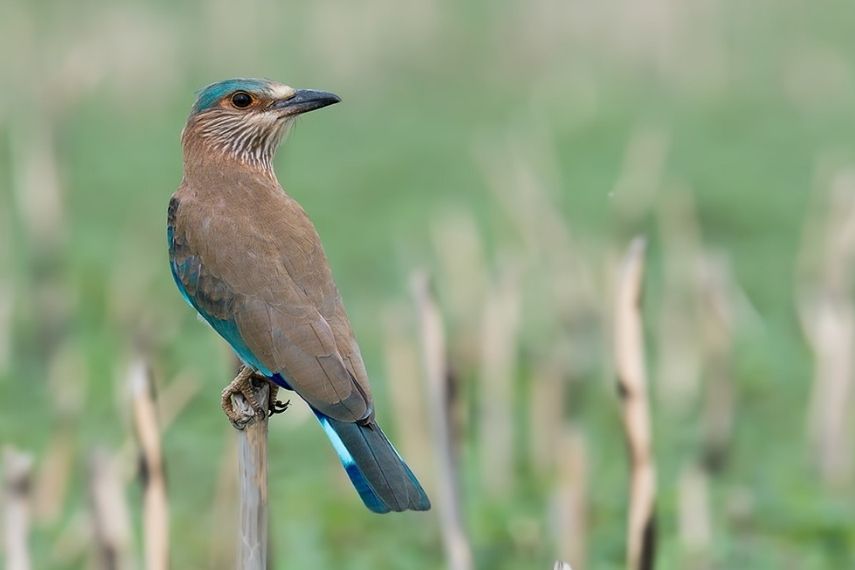
DAY 07
BHARATPUR
Before the Sunrise, your guide will arrive to take you to the Keoladeo National Park ( Bharatpur Bird Sanctuary ). He will have your entry tickets, packed breakfast, and lunch. The cabs will drive you to the gates where the Bird Sanctuary Guide will join him.
There are three ways of exploring the park – on a rickshaw, on a bicycle, and on foot. The rickshaw, in retrospect, is a good idea. The rickshaw pullers are authorized guides and are fluent enough in English.
The Keoladeo National Park is a mosaic of grasslands, woodlands, woodland swamps, and wetlands. This diverse habitat is home to 375+ species of birds, besides 370+ species of plants, 30+ species of mammals, and 14 species of snakes. The bird families in the park also include hundreds of aquatic birds that fly here in the winter months.
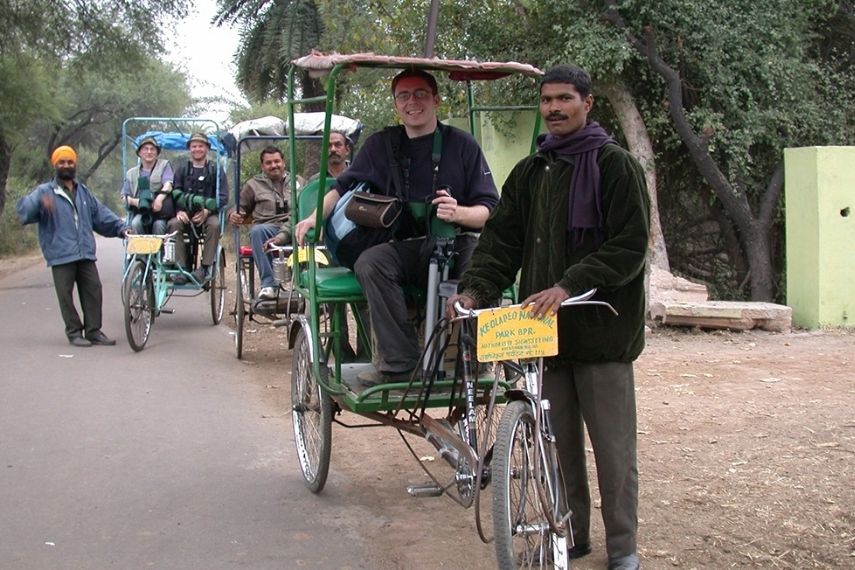
Ask us for the latest Birds and Mammals checklist for Bharatpur
There is never a dull moment in this park. Your guide will ensure that you make the best of the tour through the wetlands of the sanctuary. By the time you reach the PYTHON POINT, it will be time for lunch. Re-energize yourself with an energy drink and some food. Nearby is the Keoladeo Temple – the abode of Lord Shiva, from which the Sanctuary gets its name. You can make a small stop here before steering a little ahead.
Being a marshland, Kingfishers are in abundance here – particularly the white-throated kingfisher. Though the park is famous for its feathered residents, you will keep getting glimpses of mammals. There might be a Jackal running after prey or a family of Spotted Deer grazing around. You can even spot the Neelgai and the Bluebell etc. throughout your tour.
By the time you are done with the tour, it will be Sunset. Sunset is an opportunity to capture flocks of birds returning to their nests. You will spot Owls and Nightjars and even bats, coming out to be ready for their night safari.
Once you are done with the day, return to your abode for a sumptuous Indian meal and a cozy bed! Our representative will inform you about the next day’s plan and the time to assemble. So be ready for another amazing experience.
ADD-ONs: You can also visit the GIFT CENTRE at the end of the Sanctuary’s Tour. The gift center at the entrance of the park is a must-visit for everyone. It has a variety of books related to birds and mammals of India. Then they have a few souvenirs like T-shirts that come with “Save Nature/Forest” themes. There are magnets, postcards, a small book containing the list of birds in the park, etc.
NOTE: Those of you who wish to wind up the tour by noon, need to inform us. Cabs and drivers will be arranged to drop you either at the hotel or take you to visit a place of your choice.
TIPS:
- A day-long visit, thus comfortable walking shoes are a must. Drinking a lot of water throughout the day is advisable.
- A long day means an extra battery for your phone as well as camera (which can be arranged if you inform us in advance)
- Carry woolens along. Though the days are warm, morning and evening might see fog. Thus, the temperature will fall.
- Video Camera Fee: There are different prices for the different types of cameras. Your guide will tell you the fee.
- Carry your own water, hat, shades, and mosquito repellent. Sunscreen will save you from tanning and a pair of binoculars to have a closer look at the beautiful birds.
Days 08
BHARATPUR TO AGRA TO CHAMBAL
You need to start early for Chambal via Agra – the Land of The Taj Mahal because there are lots to explore at Chambal. Thus, assemble at the time designated by our representative.
Though Agra is a just two hours journey from Bharatpur, we would like you to start early. This is to avoid traffic on the highway and also reach time at the TAJ. You will be surprised to know that the Taj Mahal is not just known for its marble beauty, but also for rare birds at the rear side where the Yamuna flows.
We have ensured that your Agra trip doesn’t happen on a Friday since that day Taj Mahal remains closed. Your guide will join you in Agra with tickets at the entrance and take you through the majestic beauty.

Post lunch at Agra, you will proceed to Chambal which is just an hour’s drive from Agra.
Chambal River – rustic and untamed! Set against a stunning backdrop, framed by the ravines and sandbanks, the calm waters of the Chambal River are best explored on boats. Chambal is one of the cleanest rivers in India, so at places, you can even see the riverbed or fish/turtles swimming beside your boat.
We will be taking you through various terrains of Chambal through these two days. The gentle pace of the River Safari is designed to provide spectacular sightings of star-attraction of the region – the Indian Skimmer…and of course, River Lapwing & Small Pratincole above all other species found there.
The other main attractions to watch here are the rare Indian Crocodile (Ghariyal), the highly-endangered Gangetic Dolphins, and about eight species of turtles. 290 species of resident and migratory birds including Northern Pintails, Chinese Coots, Forest Wagtails, Flamingo, etc. can be spotted here with the help of your tour guide as well as the Bird Handbook that we have provided you.
Chambal is one of the remote lands of India, drenched in a typical rural spirit amid a backdrop of an ideal mix of a river landscape that becomes enchanted through its ravines. So you will have a great taste of the Indian culture here, not only in the homemade, village menu that we will serve you at dinner and the next day but also in its terrain. Mud houses, rural decor, ethnic attires, camel safaris, always- twinkling eyes with shy smiles…you name it and you will find it in the local life of Chambal. Because that’s the beauty of Chambal.
And this cannot be gauged in just one day. So, the next day as well, we explore yet sub-region of the vast expanse of Chambal and capture some more flora and fauna of the region. But before that, have a good night’s rest at our Chambal Safari Lodge which has cottages with the best amenities – an experience by the riverside that will rejuvenate your senses.
TIPS
- Taj is a heritage property, so please stay with the group to avoid heading to NO-MAN zones
- For the river Safari at Chambal, you must carry insect/mosquito repellants
- During the River Safari, please help maintain the balance of the boat, by not over-stooping to capture birds beyond the camera's reach. Stay safe.
DAY 09
CHAMBAL TO NOIDA
The day starts with all of you assembling by dawn to capture the sunrise in its full glory. This will be amid the morning songs of innumerable birds, which are specific to these wetlands. You will have pre-arranged River Safari. If it remains foggy in the morning, we will spend time bird watching in the gardens of the lodge and go for the River Safari once fog clears by the afternoon.
The Sun will be going down by the time you wrap up this tour. So without wasting time, you will be driven to Noida so that you wind up dinner and retire for the night a pre-booked hotel. You have to start early the next day at Corbett National Park. Your guide will tell you the time and place to assemble the next day. So gear up for yet another exciting journey in the land of the Royal Bengal Tiger.
IF TIME PERMITS…
A quick lunch at the village Dhaba which cooks smoked-yummy meals in earthen pots very hygienically. Post that you will be taken to the ancient settlement of Bateshwar– a 20-minute drive from the Chambal Safari Lodge. More than 40 temples at Bateshwar are dedicated to the glory of Lord Shiva. They glisten pearly white along the ghats of the Chambal river. Yet another good place for birding.
TIPS
- Brace yourself for a long day; alert us a day before if you need packed meals. Water is a must carry. You can carry dry snacks, and nuts at your end, for a quick fill-in
- Light woolens and comfortable walking shoes are a must-carry in your backpack
- You will need a good Sunscreen, hats / felt caps to protect yourself from the seething heat that Chambal is famous for, even in winters
- This is a Bespoke Tour which can be tweaked for the comfort of the differently able.
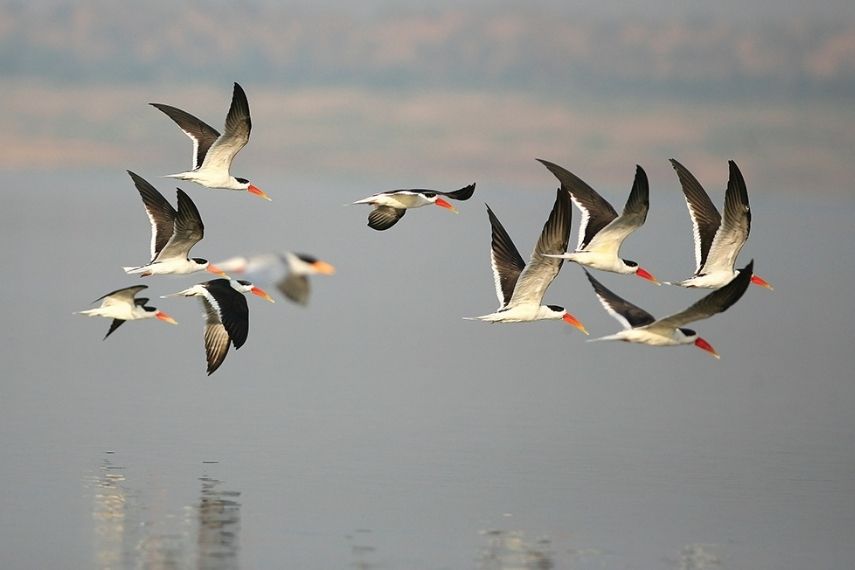
DAY 10: NOIDA TO JIM CORBETT NATIONAL PARK
Noida to Jim Corbett National Park is about a six-hour road trip. Your cabs with drivers will be ready early in the morning at a designated time. Watch out for the early birds through the journey as you proceed to the Kumaoni Hills of Uttarakhand.
Arrival at the Jim Corbett National Park would be around lunch. Our representative will help you check-in at the resort. Have a tummy full of the Kumaoni Cuisines and relax for a while. Your chief guide will join you and brief you in detail about the itinerary across the three days that you will enjoy here.
Corbett is best traversed via a Jeep Safari early morning and evening, with a lunch break by the river. All bookings, including the entry tickets to the park, have been done in advance for you. The guide will inform you about what time and where to assemble the next day. And after a detailed briefing, he will take you for a short birding tour around the lodging place. Your resort is amid the dense forests, offering a great opportunity for birding. You may also be able to spot a few mammals like Barking Deer, Jackals, etc. from a distance.
Retire early, since the next few days here would be long ones, spent amid dense forests. A stamina testing time!
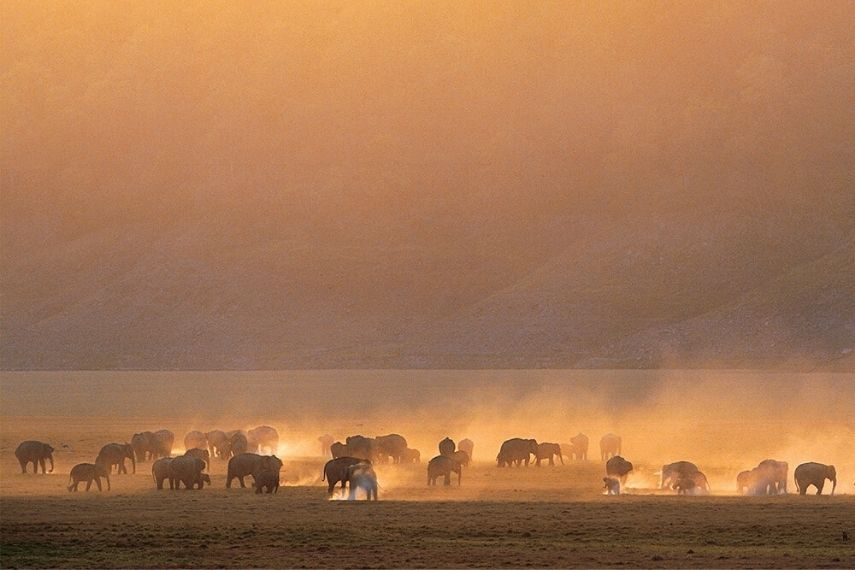
Ask us for the latest Checklist of birds and Mammals of Jim Corbett National Park
The park is very rich in reptiles including King Cobra, so watch out for your steps.
Nearly 600 species of birds dwell here. Ask us for the updated bird checklist for Corbett Tiger Reserve
TIPS:
- Three long days stare at you, so wear comfortable yet warm clothes as well as walking shoes. A wool cap and a muffler is advisable to safeguard your body from the bitter cold.
- Make sure that you do not carry any alcoholic drinks in the park. These are strictly prohibited.
- When inside the park, strictly follow your guide’s instructions and avoid shouting. Do not indulge in any behavior that may provoke the animals.
- The entry passes for the jeep safaris are available for half day. In case of a full day pass, extra expenses will have to be incurred.
- Don’t wear any bright-colored clothes or even stark white cloth while going to the safari inside the National Par. It may make animals uncomfortable.
- Tourists are required to carry a litter bag while entering the park. In short, bring back all your waste like water bottles, metal foils, tin cans, etc.
DAY 11
JEEP SAFARI AT THE JIM CORBETT NATIONAL PARK
Corbett is best traversed via a ‘Jeep Safari’ early morning and evening, with a lunch break by the river. The park opens with the daybreak; so on both days, your guide will be ready at the time designated time, with your jeeps for an adventurous Safari.
On the first day of the Safari, early morning your guides take you to the Khumeria and Marchula reserve forests of the National Park. All in all, Jim Corbett is a nature lovers’ and photographers’ delight. So fill your hearts and that of your camera to your content through these two days.
After an extensive safari of this region of the National Park, your guide will take you back to the resort. It will be late morning by then. Relax for a while, before you can decide whether you want to take the lunch by the riverside or at the lodge. You will have ample time to sort out the contents of the camera and exchange notes. Post lunch you can choose to take an elephant safari or take the guide outside the park for another date with the birds.
Once you return to the lodge nestling amid dense forests, it will be time when Night Jars and Owls can be spotted easily.
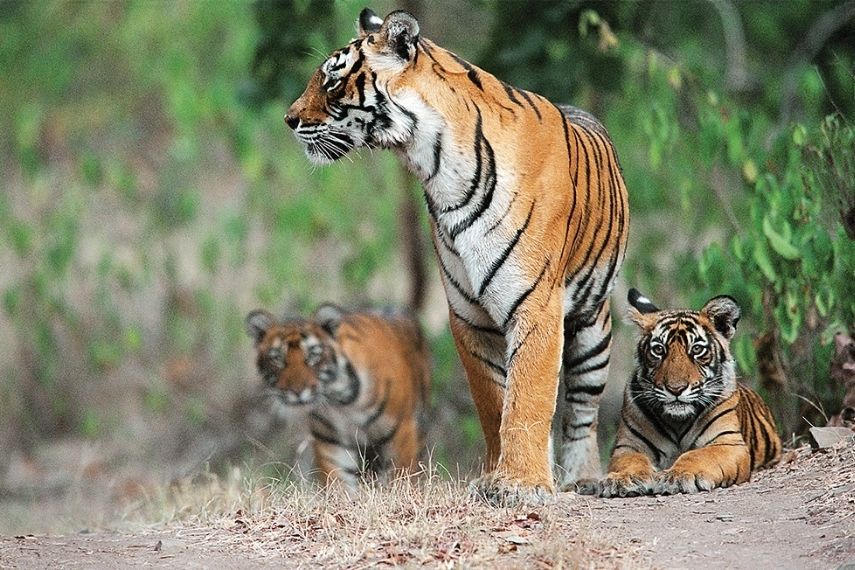
Day 12
JEEP SAFARI AT ANOTHER REGION OF JIM CORBETT
The second day also will start early in the morning. But this time your jeeps will head to Sitabani reserve forest. This one is a longer tour than the previous day so your resort will pack breakfast with you. Enjoy the bird watching in these dense green forest areas and then return to the resort for the lunch.
Head to Bijrani / Jhirna Tiger Reserve Zone of the Corbett National park and enjoy birding there. The National Park closes at a stipulated time, so your guide will alert you to wrap up.
On this last evening at Corbett, our representative will join you again. He gives you a brief layout of the plan for the next three days at Pangot- the Birder’s Paradise. He briefs you on how we travel, makes arrangements, especially for the differently able as well as details on what birds to watch for during the road trip. Retire early on this last day at Corbett.
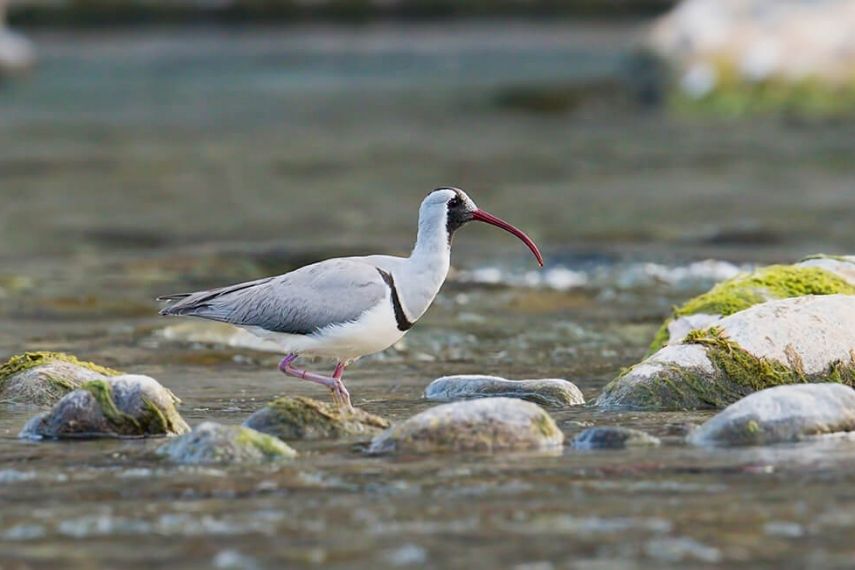
Ask us for the latest Bird and Mammals Checklist for Corbett National park
SIDE TRIPS:
For the non-birding spouse side-trips to Garjia Devi Temple, Ramganga Dam can be arranged, but only on a well-advanced notice.
TIPS:
- No littering inside the Park, carry biodegradable litter bags from your Resort.
- Extra batteries and memory cards for the camera can be arranged at prior notice.
- Packed snacks and water are a must-carry since the two days in the jungle are long ones.
- Prefer to wear clothes that match the color of Nature such as light brown, green, gray, khaki, etc.
- It is a Bespoke Tour which will only be tweaked to accommodate the comfort of the differently able.
- Your lodging is in dense forest, so keep mosquito repellent creams handy.
- Wild animals are the actual asset of the park, respect and maintain a safe distance from them
- Smoking and lighting any kind of fire are strictly prohibited within the Tiger Reserve
- No night safari; driving or entering the national park after Sunset is strictly prohibited
-
DAY 13: JIM CORBETT NATIONAL PARK TO PANGOT
The final morning at Corbett begins with a quick trip to the nearby forests for some last-minute birding and then an early breakfast. Post this you will head to the next stop of tour- Pangot.
Pangot is a small hamlet in Uttarakhand, just 15 km away from Nainital. And it is about five hours drive from Jim Corbett National Park.
Driving into Pangot is like stepping into a remote Himalayan village. The entire drive is through the Oaks and Pines of the China Peak Range via Snow View Point and Kilbury Bird Sanctuary. These are the main habitats for excellent birding. So keep watching out, as your driver is doubling up as an avid guide. He will ensure that you have a glimpse of all the birds possible en route to Pangot.
Pangot – the birdwatchers’ paradise has 250+ species of birds in and around as recorded by Asian Adventures’ Jungle Lore Birding Lodge. Yes, you will be residing here at this Lodge (and similar ones) since it is India’s first and foremost birding lodge. The lodge/lodges you will stay at have been key to birding success in the region. These nestle amid dense forests, so you don’t have to go very far looking for birds. They will fly in right at your doorstep!
Our manager helps you check in to the most-comfortable eco-stays of the region, which are warm in winter and cool in summer. It will be lunchtime by then, so savor the choicest Kumaoni Cuisines done to your taste by the experts. Take rest for a while, before your guide meets you to detail the itinerary for the next three days.
After the briefing, the guide takes you to the Lodge’s hideout. Here you can sit silently for the remaining part of the day and capture birds with your camera.
But all in all, each of the species you spot near the lodges, will sing back to the nests at Sunset. You can also often spot Barking Deer close to the lodge. And of course, Himalayan Langur are in plenty to never make you feel out-of-the-jungle!
Post-Sunset, the place acquires a serene calm, ideal one for the Owls to fly out. So in short, your lodging place alone will give you a great Birding experience on the first day itself. Have an early dinner and retire in your comfy beds.
Ask for the latest bird species list for Pangot
- One can see Crested Serpent, Mountain Hawk & Black Eagle.
- Woodpeckers are Brown-fronted, Stripe-breasted, Rufous-bellied, etc.
- Thrushes are Dark-throated, Mistle, etc.
- Striated Prinia and a very rare Grey-crowned Prinia can be seen in the terraced fields. Warblers are Tickell’s Leaf, Greenish, Grey-hooded, etc.
- Flycatchers are Asian Brown, Rusty-tailed, Ultramarine, and Verditer. Rufous-bellied Niltava etc., Orange-flanked Blue Tail, Blue-capped Redstart.
- Laughingthrushes such as Streaked, White-throated, Striated & Chestnut-crowned, etc.
- Look for Upland Pipit, Blue-winged Minla, Whiskered Yuhina, etc.
- Slaty-headed & Red-breasted Parakeet
- Grey Bushchat
- Long-tailed & Grey-backed Shrike
- Common Kestrel
- Besra
- Chestnut-bellied Rock Thrush
- Black-headed Jay
- Rufous Sibia is a common bird here.
- Pheasants that you will spot are Cheer, Koklass and Khalij
- Lammergeier, Black and Rufous-bellied Eagle
TIPS:
- Your lodging place at Pangot is amid thick forests, so do not venture out alone at night. A torch is a must carry, in case you need to seek some help from the staff.
- If you need a wake-up call, do alert the staff in advance.
- Electricity has a limited supply in hill villages, so please use it wisely.
- In case anyone needs extra information about the region, Jungle Lore Birding Lodge has a small library with ample books on birds and mammals. And even some comic books for a light read before a good night's sleep.
- Food is not allowed in or around the cottages since it invites Langurs. So ensure you walk up to the Cafe for a quick refill
- If you wish to feed the birds, ask the Manager for Bird Feed, which is specially bought by us. Remember, birds’ tummy is not made for human food.
- Maintain calm when you spot a bird. The calm of the Lodge is what attracts them here.
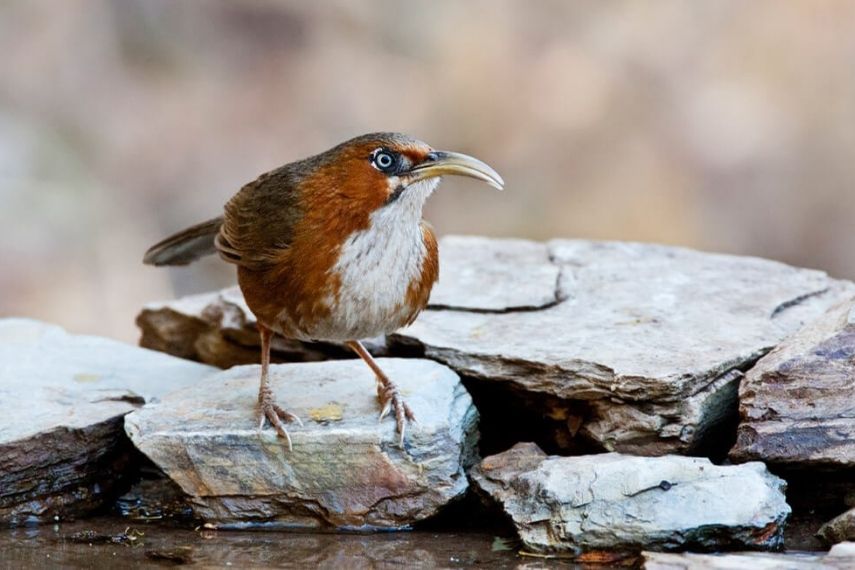
DAY 14: AN EXTENSIVE BIRDING EXPERIENCE AT PANGOT
All the three days that you are here in Pangot, your driver will be ready early morning with a packed breakfast, water, and cabs to take you to the choicest birding zones of the region
Pangot is a celebration of winged creatures both big and small. So, be it the Kilbury Bird Sanctuary, The Woodpecker Point, or more, we will give you a Birding experience like no other.
Before the excursion begins, our expert naturalist will give you a short basic course in bird spotting. He will briefly detail every species you could encounter in the next three days.
On day one, early morning your guide will meet you at a designated time. He will take you to good birding trails that extend right from the lodge to Timla Pani, Ghughu Khan, Kilbury Bird Sanctuary, and on to the Cheena Peak. You will carry a packed breakfast, but remember it is for you and not the birds. By the time you return from your sojourn with the birds, it will be lunchtime. Relax for a while and gorge on the sumptuous Kumani Cuisines. Soak yourself in the aura of the forests surrounding the lodge, till the Sun goes down a bit. You have ample time to hit the tiny yet well-done Library we have; sort out the images, recharge camera batteries, etc.
Post lunch it is time to either head to the hideout for bird watching or to a trekking expedition – whichever is your option. Inform us about the same in advance, so that we can have a separate guide accompany you.
With Sunset, Pangot comes alive yet again with songs of even the rarest birds of the region. Time to sit around the lodge or at the hideout to capture some more. Have a quick Kumaoni snack before you can sit outside the lodges again to spot Owls and Nightjars.
Dine in early, like the people in the hills, do. The manager will brief you about the next day. After this, you must retire to your cottages. The night at Pangot Jungles demands so for your safety
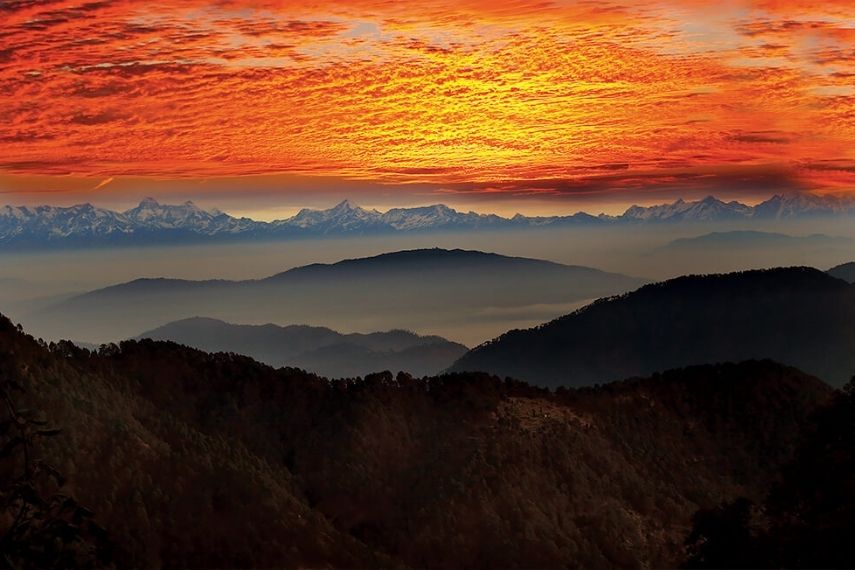
Day 15- SECOND DAY OF EXCURSION AT PANGOT
On the second day too, you need to assemble before breakfast at the stipulated time, given by your guide. He will be ready with a packed breakfast for those who have pre-ordered.
Your guide will take you to Woodpecker Point around Pokhara Dhar, one of the most reliable birding spots in the region, just two kilometers away from Pangot. It is off the main road which leads to Kilbury Sanctuary. The region has a shallow pool or Pokhara where you can easily find Brown–fronted and Grey-headed Woodpeckers, as well as the Luminous Maroon Oriole and jewel-like blue Verditer Flycatcher.
Another point famous for easy birding is the Pangot Nala. You have to come down on the main road from Pokhara Dhar and head towards Kilbury. One kilometer ahead, you will find Pangot Nala which is a small gushing stream. Look out for Spotted Forktails, Long-billed thrushes, and Brown-wood Owls.
By the time you are done with these two regions, it is late morning. You will head back to the lodge for breakfast or an early lunch that can be arranged if you need a siesta. Others can exchange notes with the manager (who is also an avid birder) and recharge their camera batteries.
Post lunch relaxes few hours. Those who wish for more adventure can head to the Haryal Trek, a six-kilometer trek amid thick oak forests. Inform us in advance, we will have a guide accompany you.
In the late afternoon, you can again sit outside the lodge or at the hideout or roam in the jungle (with the guide) surrounding the lodges. You will find ample birds here to carry back in your camera. In between an evening and night birding experience, do not forget to fill up yourselves with the choicest Kumaoni snacks and dinner done to your palate. Retire to your cottages after an early dinner.
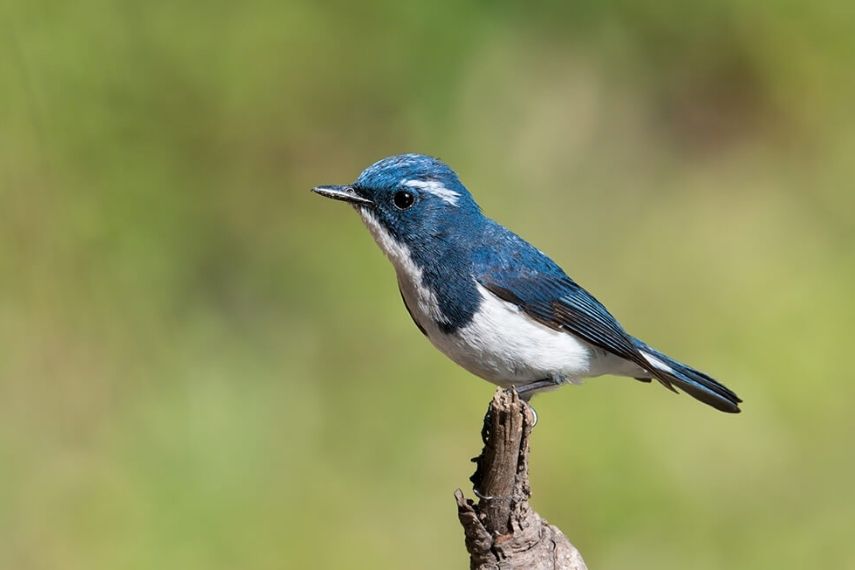
Day 16: THIRD DAY OF BIRDING AT PANGOT
Day three can start a little late post an early morning breakfast. This is because the last two days have been pretty hectic treks for you. The guide will join you and head towards the Tigda Baba trek. This trel amid breezing Oak forests is another enchanting birding region with a small stream gushing by. A perfect place to spot Black-throated Thrushes, Common Stonechats, Slaty-headed Parakeets, Red-billed Blue Magpies, Streaked Laughing Thrushes, Russet Sparrow, and Yellow-breasted Greenfinches
After an extensive birding tour, you will return to the lodge late morning to take some rest and refuel your body battery. Enough has been captured by the camera in these three days. So you have ample time to segregate the same before the Chef serves the final lunch of the Pangot tour.
Post lunch, you can sit around the lodge for more birding, head out for an adventure trip or simply enjoy reading a book at the Jungle Lore Library.
The last night at Pangot will call for an early sleep. The next day you need to start early for the final birding experience before we drive you to Sattal.
TIPS FOR BIRDING AT PANGOT:
- Carry your binoculars for sure since Pangot has the tiniest birds in the region, which only your eye lens, backed by the binocular can capture.
- Those who do not wish to go for a Birding Tour need to inform us in advance. A cab with a driver can be arranged for them for local sightseeing. Pangot also offers activities like rock climbing, rappelling, zip-lining, and the Burma Bridge.
- There are many trekking zones as well, where you can not only go for a birding experience under the watchful eyes of the guide but also enjoy the songs of the wind which is an enchanting experience as it rustles through the Oak trees. Haryal Trek and Tigda Baba trek are just a few to mention.
- Trekking in Pangot means traversing thick forests which are inhabited by Leopards and other wild animals. To avoid hitting a forest trail without a guide. Safety must be your top priority.
- Pangot is a NO PLASTIC ZONE. Please cooperate.
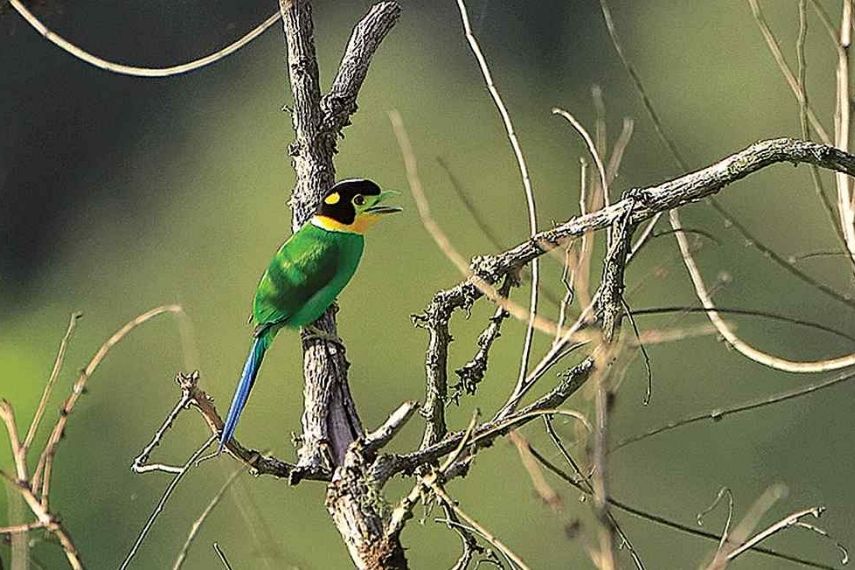
DAY 17
PANGOT TO SATTAL
After an early morning finale birding time and breakfast at Pangot, you will be heading to Sattal – an interconnected group of seven freshwater lakes. while Pangot is a high hill region, Sattal is at a lower altitude….thus having its own birds which thrive in and amid the orchards in the Mehragaon valley.
It is a two-hour drive amid dense forests of Oak, Sal, and Pine trees. And you reach Sattal by late morning/ noon and your tour guide will join you for a brief of the day. The region is one of the freshwater biomes in India, whose lakes are a paradise for migratory birds. So post lunch your tour guides will join you for a birding experience nearby the lodge itself.
Heaven for naturalists, birders, and photographers alike, these forests are literally pulsating with life with the constant sweet chirping of birds. The mesmerizing avian fauna includes over 500 species’ unique assortment.
SATTAL
Ask us for the updated Bird Species of Sat Tal
All through the next two days, you will be taking hikes through various regions of Sattal, to explore varied locations for birding. Your guide will inform you at what time you need to assemble for birding the next day. Retire to your cottage after an early dinner.
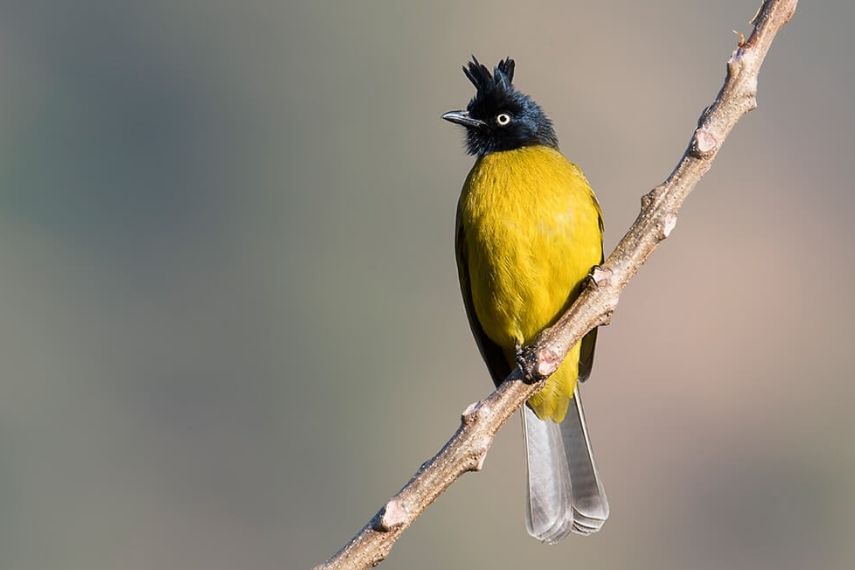
Day 18: SECOND BIRDING DAY AT SATTAL
After early morning breakfast, your tour guide will take you to Chaafi – the most famous birding hotspot in the Sattal region. Packed lunch and water will accompany you to Chaafi, a small village just 15km from Sattal. Do not miss the bird en route, your guide will keep prompting you to do the same.
At Chaafi, you will be able to photograph birds like the Crested Kingfisher, Brown Dipper, and various redstarts here. If you’re lucky, you might even sight the Tawny Fish Owl resting in the nest or the Fire-fronted Serin. Grab a quick bite at noon and head to the lodge for some rest. Late afternoon you can head to the Sattal lake for birding. By the time you return, it will be time for hot, piping snacks. Your guide will brief you about the next day at Sat Tal and also help you identify the species captured in the camera. If any night stakeouts are there near the lodge, he will take you out for the same post an early dinner. Else you can retire early.
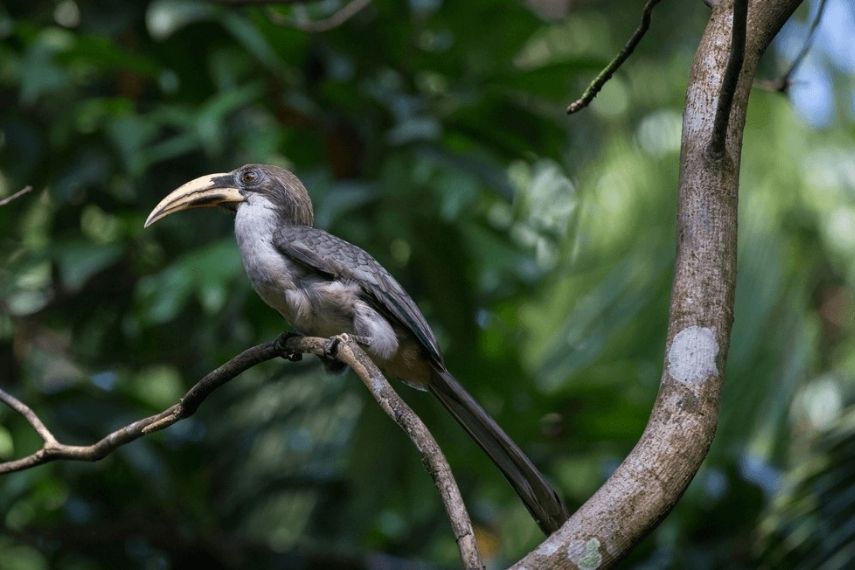
Day 19: FINAL BIRDING DAY AT SATTAL
We will keep the final day at Sattal light one for you. The birding trip will start to post an early morning breakfast. The guide will take you out to the Sattal Lake, Sattal park, and other such local birding spots in the region. Although one can go birding on almost any road in Sat Tal, there are some birding hotspots that are famous among the photographers. Don’t miss out on visiting Sattal Studio – a magical place to sit with your camera or binoculars and watch the birds come to bathe in both summers and winters. And if time permits, enjoy Maheshkhan – a place of calm and solitude within the dense forest.
Do not forget to fill yourself with timely lunch and quick snacks in between these birding trips of the day. Your guide will ensure you are served these at the best restaurants of the region.
On the last night, the guide will prompt you to retire early, since the next day you need to proceed to Delhi after an early morning short birding tour.
NOTE FOR NON-BIRDING SPOUSE / MEMBERS
Sattal isn’t just about birds, so if you are looking for more, a tour of the Butterfly Museum can also be arranged. There are about 243 species of butterflies and moths. And the trek to this place is amid an enchanting pine forest home to more species of birds. The private museum hosts over 1,500 species and over 200 type specimens.
If you’re not so much a birds-and-butterflies person, there’s still quite a bit that you can do in and around Sattal – go kayaking on one of the seven lakes, or go rock-climbing, rappelling, and river crossing.
TIPS FOR BIRDING AT SATTAL
- To photograph species that aren’t found at the hide-outs, you will have to travel to different birding hotspots by car. A lightweight monopod will be easier to carry while on a bird trail or trek. Do carry a wide-angle lens for habitat shots.
- Make sure you carry extra camera batteries and memory cards, as the bird hides at your resort will provide photo –opportunities throughout the day.
- Warm clothing is a necessity during winter. Sattal being a lake region can get very cold abruptly.
- Forest-friendly colors of clothing such as shades of green and brown are always a good idea.
- Carry hats, sunscreen, and comfortable walking shoes as you will be traveling to various places by car; later of course trekking to bird trails.
- Make sure to carry binoculars or ask the guide in advance to arrange the same.
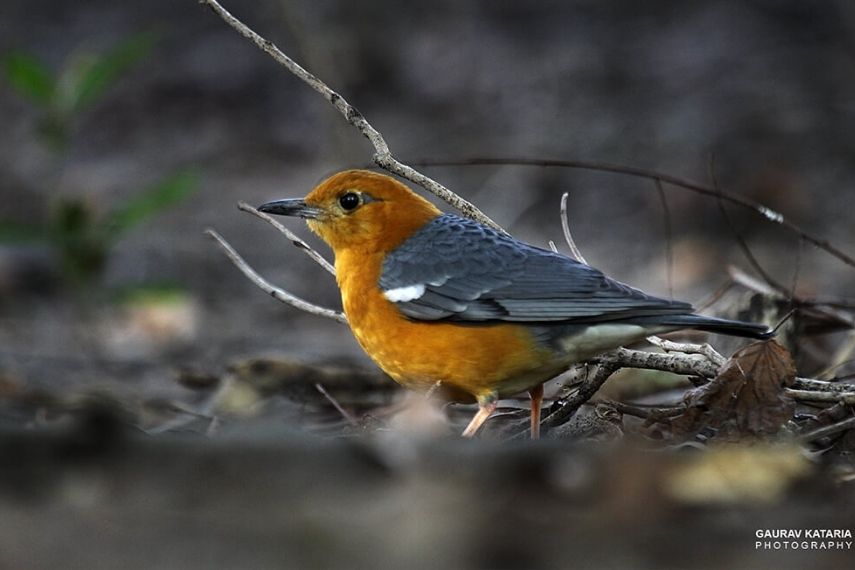
DAY 20 SATTAL TO DELHI
On a penultimate day, your guide takes you on a final early morning birding trip at Sattal. Maybe a tour of the lake or wherever the guide spots ample birds.
You will return to the lodge late morning. Have lunch and head off to pack your bags. After this, you need to head off to Delhi. So please assess all your belongings and documents you will need to fly back to your home country. Do not miss out on anything at the lodge. Your guide bids adieu while tour cabs take you to Delhi, where you will reach your hotel by evening.
Here our representative meets you for a final check of your respective flight timings the next day and ensures your cabs reach you in time to transport you to the airport. Please retire early after a sumptuous meal of Indian cuisine.
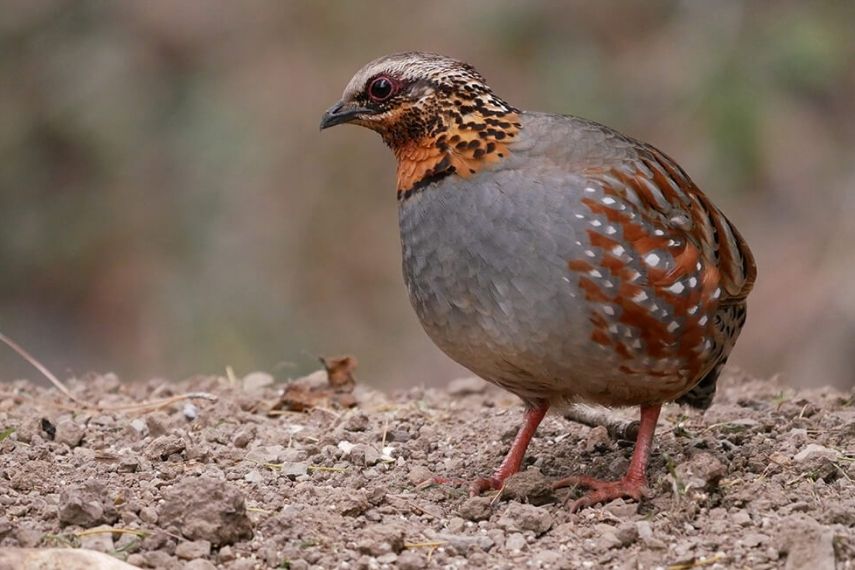
DAY 21: Departure from Delhi
After breakfast/ meals, please assemble at the stipulated time given to you by our representative so that you don’t miss the flight. And before that ensure all your belongings and documents are in place. Your cabs will drop you at the airport. You will take home an experience of a lifetime. Don’t forget to share the same with your friends on return, because we wish to give them the same on the next tour! Bon Voyage!

